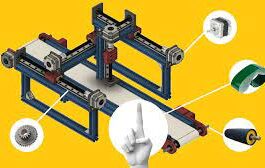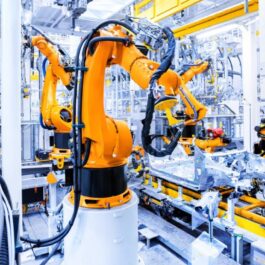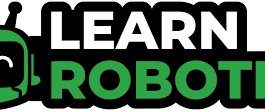Collaborative Robotics in Industry Specialization
- Collaborative Robotics in Industry, Mechatronics systems and their Utility Interfacing of Sensors and Transducers.
- Interfacing of Drive systems with Electronics control system.
Description
Collaborative Robotics in Industry Specialization
What you’ll learn
- Collaborative Robotics in Industry, Mechatronics systems and their Utility Interfacing of Sensors and Transducers.
- Interfacing of Drive systems with Electronics control system.
Advance your subject-matter expertise
- Learn in-demand skills from university and industry experts
- Master a subject or tool with hands-on projects
- Develop a deep understanding of key concepts
- Earn a career certificate from L&T Edu Tech
Earn a career certificate
- Add this credential to your LinkedIn profile, resume, or CV.
- Share it on social media and in your performance review.
Specialization – 3 course series
- Collaborative Robotics in Industry merges traditional manufacturing with cutting-edge robotics.
- Equipping learners with skills to navigate modern manufacturing.
- Foundational Industrial Manufacturing knowledge highlights robotics’ role in enhancing efficiency and precision.
- Introductory Mechatronics integrates engineering principles for robotic system development.
- Understanding Introductory Electronics aids in comprehending digital control circuitry and sensor technologies.
- Applied Physics principles furnish analytical tools for robotic system design.
- Graduates excel in Robotic Manipulator and Gripper Design.
- Integrating Mechanical Components with Digital Control Circuitry for optimized performance.
- Sensor & Transducer Technology mastery enables real-time monitoring and control, enhancing productivity.
- Drive Systems expertise ensures adaptability to diverse manufacturing environments.
- Troubleshooting in Mechatronic Systems and System Design using MATLAB-Simulink enables efficient issue resolution.
- Robot Programming skills empower precise and efficient control.
- Robotic Vision Systems and Machine Vision augment automation and quality control.
- Integration of IIoT technologies drives efficiency in collaborative robotic systems.
- Graduates find career opportunities as Automation Engineers and Robotic Designers, shaping the future of manufacturing with innovation and efficiency.
- For heavy load handling purpose utilize the electro-hydraulic systems.
- Prepare a blue print to carry out this project comprising all the essentials like appropriate sensors, drive systems, electronic circuitry and fluid circuitry.
- Interface the developed robot with a control system.
- Find out an appropriate ICs and essential electronic circuit elements.
- Choose prototyping platforms either Arduino or Raspberry Pi.
- Apply the IIoT concepts.
- Choose a relevant gate way and connectivity to monitor its functioning and enhance the productivity.
You must be logged in to post a review.








Reviews
There are no reviews yet.